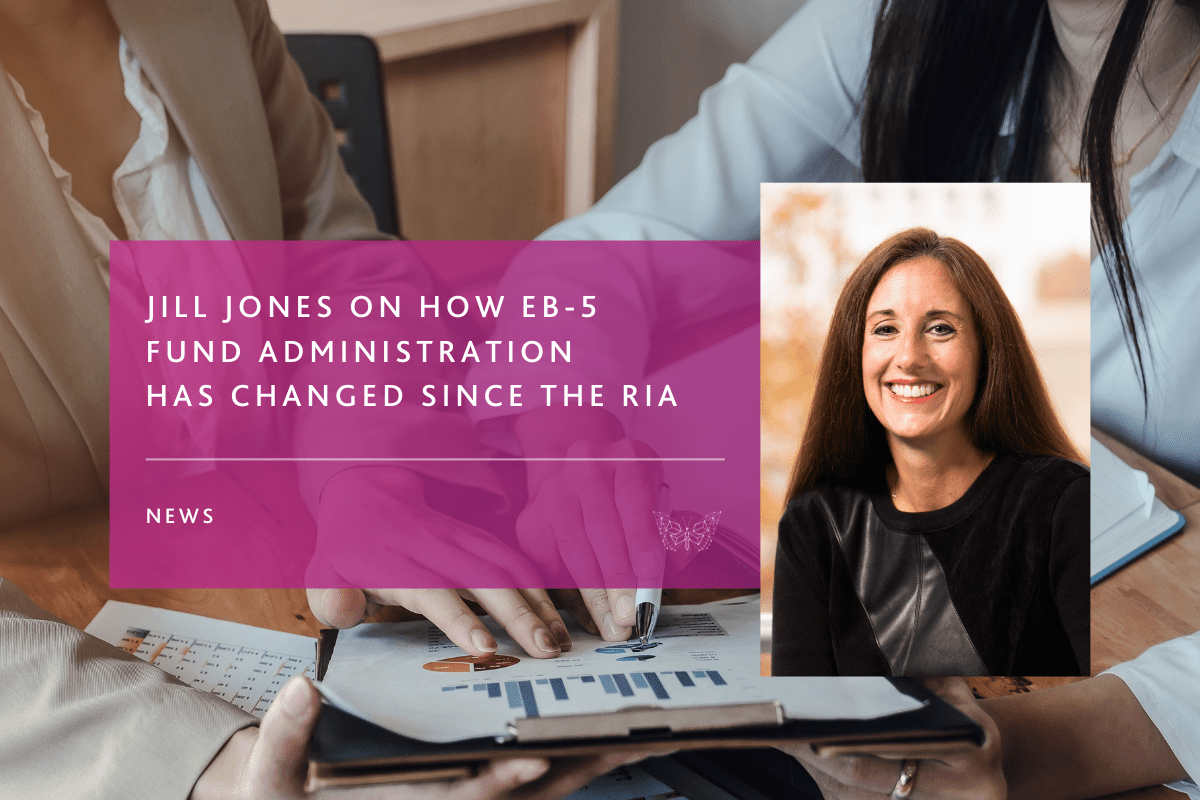How the EB-5 Reform and Integrity Act’s fund administration requirement can help combat fraud and abuse – and why an audit may not be enough.
Throughout its 32-year history, the EB-5 Immigrant Investor program has attracted billions of dollars in investment and created jobs throughout the country. It has also, like many government initiatives, attracted some bad actors. Though fraud and abuse are rare, there have nevertheless been some high-profile instances.
Just this year, Vermont ski resort owner Ariel Quiros was sentenced to 60 months in jail and ordered to pay more than $8 million in restitution for defrauding approximately 169 investors for a biotechnology facility in Vermont that was never constructed, part of the largest fraud case in Vermont’s history.
There was also a major fraud lawsuit in 2022 where one of the defendants was PNC Bank. The suit centers on the activities of the South Atlantic Regional Center, which allegedly made false and misleading statements to investors and is accused of colluding with PNC to create a “fake escrow account” intended to look like a real escrow account to investors while providing no actual escrow protections.
While these are isolated incidents, the media coverage surrounding them has the potential to tarnish what is otherwise a successful program. Protecting against this fraud and abuse was a major goal of recent legislation affecting the EB-5 Regional Center program.
How the Reform and Integrity Act helps protect investors
On March 11, 2022, Congress passed the EB-5 Reform and Integrity Act. Among other things, the bill reauthorized the Regional Center program for five more years, created new reserved visa categories, and increased the minimum investment for Targeted Employment Areas.
You can learn more about the specific changes in the RIA and the importance of Best Practices in the new era of EB-5 on our website, but on the topic of combatting fraud, the law has a number of new rules regarding reporting and compliance. To list just a few:
- All promoters and migration agents abroad must register with USCIS, have written agreements with issuers, and fully disclose all fees to investors in writing. These disclosures must be filed with USCIS along with investor petitions.
- USCIS will perform site visits to each project and audit each Regional Center at least once every five years. All records and financial statements associated with the project must be kept by the RC for five years past the date of the last transaction and made available to USCIS as well as investors.
- NCE’s are required to maintain EB-5 capital in bank accounts that are insured and separate from all other operating funds until they are deployed to the JCE.
- A third-party fund administrator is required to cosign on all disbursements of EB-5 funds from the NCE to the JCE, ensuring the movement of funds is in accordance with the offering documents.
More comprehensive reporting standards will hopefully help weed out bad actors while allowing RC’s who embrace best practices to continue to help investors take advantage of EB-5. Not only can the new rules aid regulators in finding violations, they can also help investors, who will now have more information about the project, Regional Center, and how their funds are being handled.
The third-party fund administration requirement
One of the biggest changes of the RIA is a rule that requires the use of an independent third-party fund administrator. Some of the tasks that can be completed by an FA include:
- Storage for relevant documents
- Evidence of fund movement and funding confirmation letters
- Verification that requests for transfers are compliant with control policies
- Approving/Cosigning transfers with a written or electronic signature
The functions and benefits of a fund administrator for EB-5 were summed up in an article in the October 2022 issue of the EB-5 Regional Center Business Journal. Titled, “Understanding Audits & Fund Administration under the Reform and Integrity Act” it was written by Coleen Danaher, VP Business Development, JTC, Bidhya Dhungel, CPA, EB5 Capital, and Mike Xenick, CEO, InvestAmerica.
“The fund administrator,” the article states, “improves transparency, security and compliance and dramatically reduces the potential for fraud since any discrepancies in money movement, account balances, investor onboarding, or financial statements are identified and resolved immediately.”
While a third-party FA can provide a lot of important services that help protect investors, some Regional Centers may look to obtain a waiver. For example, if the NCE is controlled by or under common control of a registered investment adviser or broker-dealer registered with the Securities and Exchange Commission, a third-party FA is not required.
The other way to obtain a waiver is if the financial statements of the NCE and affiliated job-creating entity are audited by an independent accounting firm, with portions of the audited financial statements provided to DHS and investors. Some Regional Centers may be considering this option, but an audit alone doesn’t provide the same security for investors that a fund administrator can.
Where audits fall short
The Regional Center Business Journal article does a great job of explaining audits and why they’re useful:
“A financial statement audit is a thorough examination of a company’s financial records by independent auditors to ensure the financial statements (generally, income statement, balance sheet, changes in stockholder equity, and cash flow statement) are a fair representation of the company’s financial performance during a set time period, usually a calendar or fiscal year.
“During an audit engagement, most of the audit procedures are aimed at detecting and correcting material errors. Materiality, in this context, refers to a benchmark used to evaluate misstatement or errors in financial reporting. The magnitude of a material error is such that it might affect the judgment and decision-making of the financial statement readers. The audit procedures are designed to capture and review transactions that are at or above the designated materiality level. Hence, the scope of an audit is limited. Additionally, sampling is widely used in an audit for selecting and reviewing transactions, which leads to a possibility that a fraudulent transaction will not be selected in the auditors’ sample and, therefore, will go undiscovered, especially if it falls below the materiality threshold. Therefore, an independent audit may not identify all incidents of fraud.”
Beyond the possibility of not being able to identify some incidents, the big drawback is that audits are after-the-fact, while fund administration is “comprehensive and integrated into an EB-5 fund’s transaction infrastructure.” This means issues can be identified as they happen, providing greater transparency for investors by “creating an environment of trust that the flow of funds is occurring as intended, and that the investor’s capital investment is being protected before, during and after the transaction has been consummated.”
While an audit can tell you when abuse has occurred, fund administration can help prevent it. That doesn’t mean audits aren’t useful, but they shouldn’t be used in place of fund administration. For investors to feel confident, the smart choice is to do both.
Best practices for fund administration and audits under the RIA
Because fund administration and audits have unique roles, the safest choice is to employ both of them. As Danaher, Dhungel, and Xenick point out, “While utilizing both will increase the costs of EB-5 offerings, the combined benefits of both will not only strengthen the ultimate outcome and integrity of EB-5 transactions, but it will also strengthen the perception of the EB-5 industry in the long run.”
Investors want to feel confident their funds are safe and used properly, and the best way to ensure that is to look for a Regional Center that is partnered with a trusted fund administrator that follows best practices regarding recordkeeping and investor funds to pair with commissioning a yearly GAAP audit.
JTC’s EB-5 Administration Solution Suites provide an integrated approach to administering the entire EB-5 program life cycle, including navigating multi-faceted escrow and depository requirements, streamlining multi-level fund administration, and providing audit trails for issuers, investors and regulators.
That includes capital flow reporting over the entire project lifecycle, document storage, and cosigning on all transactions, including those in escrow accounts, along with 24/7 online portal access for investors. While other fund administrators may be able to offer some of those services, only JTC has a comprehensive purpose-built solution for EB-5 Regional Centers.
Learn more about our EB-5 solution by downloading our EB-5 Administration Solution Sheet.
Stay Connected
Stay up to date with expert insights, latest updates and exclusive content.
Discover more
Stay informed with JTC’s latest news, reports, thought leadership, and industry insights.
Let’s Bring Your Vision to Life
From 2,300 employee owners to 14,000+ clients, our journey is marked by stability and success.




















